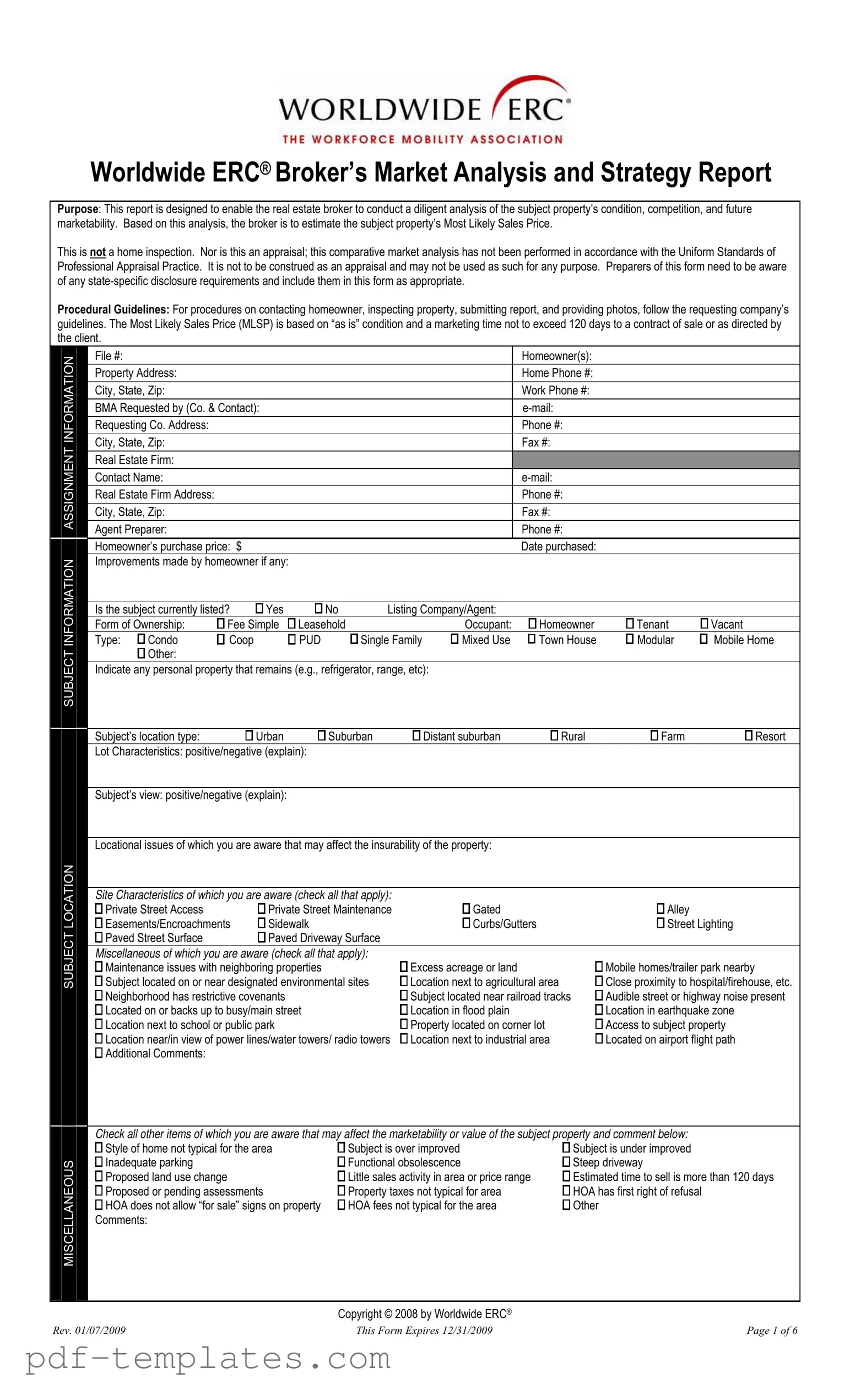The Comparative Market Analysis (CMA) is a document frequently used in real estate transactions, similar to the ERC Broker Market Analysis form. A CMA helps real estate agents estimate the value of a property by comparing it to similar properties that have recently sold in the area. Like the ERC form, a CMA assesses the condition of the property, evaluates competition, and provides insights into market trends. However, a CMA is typically more informal and does not require the same level of detail or specific disclosures as the ERC form.
The Property Condition Disclosure Statement (PCDS) is another document that shares similarities with the ERC Broker Market Analysis form. The PCDS is provided by sellers to inform potential buyers about the condition of the property, including any known defects or issues. While the ERC form focuses on marketability and pricing, the PCDS emphasizes transparency regarding the property's condition. Both documents aim to protect parties involved in a real estate transaction by providing crucial information that may affect the sale.
When engaging in a transaction involving a recreational vehicle, it's essential to utilize the appropriate documentation, such as the Texas RV Bill of Sale, which is a legal document that records the transfer of ownership for an RV in Texas. This form is beneficial for both the seller and the buyer, as it encapsulates vital transaction details, ensuring that the transfer process is seamless. For comprehensive guidance on this document, you can visit documentonline.org/blank-texas-rv-bill-of-sale/, where further information is readily available to assist you in successfully navigating an RV sale.
The Appraisal Report is also comparable to the ERC Broker Market Analysis form, albeit with distinct differences. An appraisal report is a formal evaluation conducted by a licensed appraiser to determine a property's fair market value. While the ERC form estimates the Most Likely Sales Price based on market conditions and property specifics, an appraisal provides a more comprehensive analysis, often required by lenders for financing. Both documents serve to inform stakeholders about property value, but the appraisal is more standardized and regulated.
The Listing Agreement is yet another document that bears resemblance to the ERC Broker Market Analysis form. This agreement outlines the terms between a seller and a real estate broker, detailing how the property will be marketed and sold. Like the ERC form, it involves an assessment of the property’s condition and competitive positioning in the market. However, the Listing Agreement is more focused on the contractual relationship and obligations of the parties involved, whereas the ERC form is primarily concerned with market analysis and pricing strategies.
